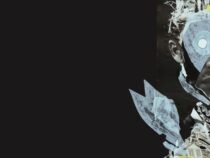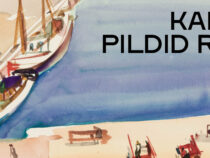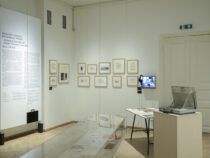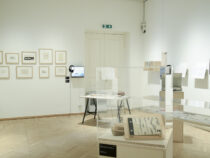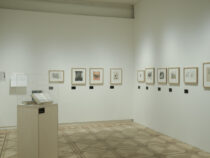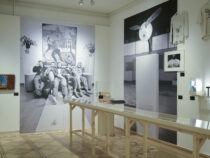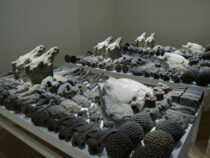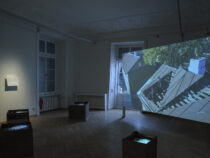16.03.2024–21.07.2024
The seventh exhibition of the Tartu 88 series Initiative from Below. Estonian Caricatures in the 1980s offers a cultural-historical perspective on one of the most controversial aspects of life during the Soviet era: humour. Given that the history of Estonian caricatures is incredibly rich, even within a single decade, the curator has decided to focus on the moment when the absurdity in Soviet life gave birth to Estonian surrealism.
In 1986, the Tartu Art Museum hosted an exhibition in its premises on Vallikraavi Street, featuring cartoonists who had come together under the name Tallinnfilm Surrealists. This exhibition, which garnered 15,312 visitors, is likely the most popular project in the history of the Tartu Art Museum. This was due not only to the quality of the artworks but also reflected the overall popularity of humour. During the same period, the circulation of the humour magazine Pikker reached 70,000 copies. Herilane / The Wasp, the satire section of the newspaper Edasi, was read by 80% of the paper’s readers. There was an insatiable hunger for humour.
The reasons behind the popularity of humour are not straightforward. A commonly accepted explanation is that the totalitarian state authorities recognised the need for an outlet of dissatisfaction in a society with limited freedom. Therefore state-sanctioned humour provided a legal form of resistance. The fact that nearly half of the content in the humour magazine Pikker consisted of readers’ questions – ranging from why there was no buttermilk in stores to why houses in the Mai residential area were either over- or underheated – reflects this explanation. Simultaneously, absurd humour began to infiltrate Pikker in the 1970s. The combination of these two tendencies suggests that societal disorder had reached a point where people began to perceive their own lives as absurd, and humour became much closer to reality than daily news. Ironically, the title of the annual cartoon exhibition series at that time was What’s There to Laugh About? In a way, advertisements produced at the time by Eesti Reklaamfilm for products that either weren’t produced at all or were impossible to acquire can be considered a symptom of this situation. The best known earworm-like lyrics from the renowned advertisement film director Harry Egipt’s oeuvre are “No complaints, just buy the paints” and they are part of the exhibition today. For Estonian art, humour provided an oasis of freedom within a state-funded but relatively uncontrolled domain compared to high culture. It was within this context that Estonian surrealism emerged.
The exhibition Initiative from Below opens with the collective NAKS, a group of young caricaturists who gathered at the University of Tartu in the early 1970s. Unlike anecdotes, cartoons require a public distribution platform. Therefore, the exhibition features both the humour magazine Pikker and the humour section Herilane from the newspaper Edasi. Additionally, visitors can explore the well-organised and even more subversive collection of anecdotes by the folklorist Jüri Viikberg. Such classics as The Ulyanov Family by Heiki Ernits, the book Tagurpidi / Inside-Out by Priit Pärn, and Estonia’s most famous caricature Sitta kah / Just Shit are also part of the display.
With the end of the Soviet regime came the demise of the distinctive humour culture that had developed over Estonia’s fifty years of occupation. To show that the artistic processes of that time should not be underestimated, the exhibition includes the works of two artists born in the 1980s: Flo Kasearu and Jass Kaselaan, in whose works Estonian surrealism continues to thrive within today’s contemporary art.
The exhibition Initiative from Below is part of the exhibition series Tartu 88, which consists of archive projects of the Tartu Art Museum covering the last 35 years of Estonian art history, the most under-represented period in the museum’s archives. The project aims to create a thoroughly researched addition to the archive to supplement materials in the museum’s collections from earlier eras.
Curator: Indrek Grigor
Graphic design: Laura Merendi
Coordinator: Kristlyn Liier
Translation: Peeter Talvistu
Language editing: Eva Lepik & Richard Adang
Participating authors:
Tallinnfilm Surrealists: Heiki Ernits, Rao Heidmets, Vahur Kersna, Miljard Kilk, Kalju Kivi, Mati Kütt, Hillar Mets, Priit Pärn, Tõnu Talivee, Riho Unt and Hardi Volmer
Caricature collective NAKS: Andres Ader, Viljar Ansko, Hiie Ivanova, Raul Kilgas, Silja Kudisiim, Tõnu Lepp, Peeter Paris and Heiki Raudla
And: Harry Egipt, Rein Lauks, Jaak Lõhmus, Flo Kasearu, Jass Kaselaan, Andrus Peegel, Ilja Popovits, Elle Tikerpäe, Aarne Vasar and Kurti Vool
The materials exhibited at the exhibition come from the Estonian Humour Museum, Estonian Literary Museum, Art Museum of Estonia, National Archives of Estonia, Tartu Art Museum and private collections.
Thank you: Heiki Ernits, Raimu Hanson, Rao Heidmets, Priit Koppel, Madli Mihkelson, Olga Pärn, Priit Pärn, Elnara Taidre, Tõnu Talivee, Andrus Tamm and Andres Toodo
Exhibition team: Indrek Aavik, Nele Ambos, Maarika Espenberg, Joanna Hoffmann, Margus Joonsalu, Annegret Kriisa, Siim Lillo, Katrin Lõoke, Vahram Muradyan, Tõnu Narro, Jaanika Peebo, Kristel Sibul and Urmo Teekivi
“Initiative from Below. Estonian Caricatures is the 1980s” takes place within the framework of the European Capital of Culture Tartu 2024 main program. It is part of a larger series of exhibitions dedicated to the 100th anniversary of the surrealist manifesto, which also includes “Ilmar Malin. The Glow of Eternity” and Kris Lemsalu’s solo exhibition “DONATELLA. Spiral of Life”. Along with the exhibitions at the Tartu Art Museum, the exhibition “Surrealism 100. Prague, Tartu and other stories …” is on display at the Estonian National Museum from 4 April.
Exhibition views
Photos: Madis Katz

